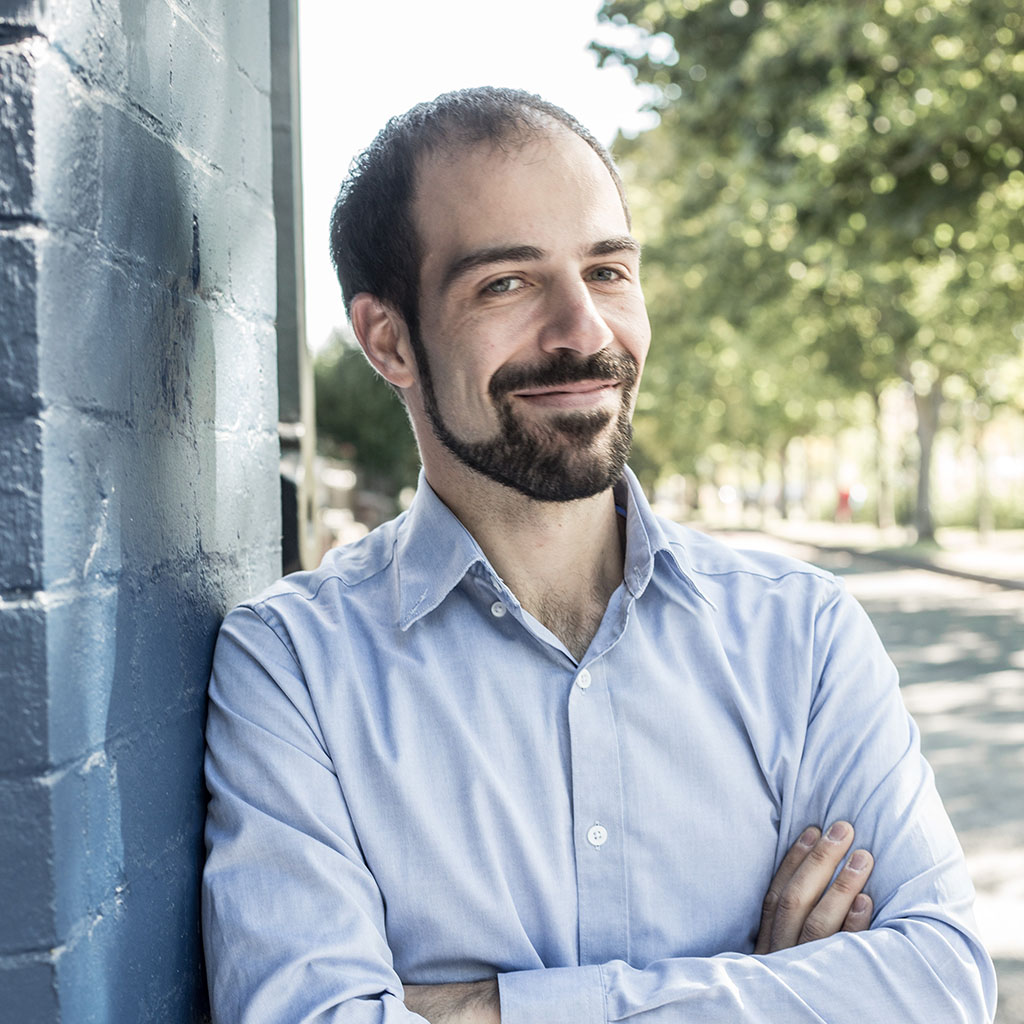
|
- Date: 19.06.2015
- Time: 2:00pm
- Location: Room 03.13.010, FMI-Building, Garching, Boltzmannstr. 3
|
Domain-Specific Modeling for Vascular Freehand Ultrasound
Abstract:
Ultrasound-imaging is nowadays the modality of choice for initial examinations in vascular applications. Real-time capabilities and the interactive nature of this modality allow trained sonographers to utilize their experience to perform reliable diagnosis with a minimal expenditure of time. For untrained doctors, however, a similar diagnosis is much more time-consuming and error prone. Consequently, especially 3D sonography suffers from a high dependency on the operator and variations of acquisition parameters, hampering the full clinical acceptance of those techniques.
With the goal of an improved reliability and quality of the whole ultrasound processing chain, this thesis introduces a set of mathematical and technical methods, incorporating domain-specific knowledge in both the acquisition process and further post-processing and quantification steps. This includes a novel solution for the acquisition of spatio-temporal ultrasound data, i.e. 3D+t information, by correlating pulse-oximetry sensors with ultrasound flow-velocity signals to retrieve an accurate reference for phases of cardiac pulsation. Moreover, both physically and biologically inspired models for an improved processing of ultrasound data are introduced. As such, a framework for a detailed physical modeling of ultrasound acquisitions is described, utilizing directed, unstructured graph networks to represent arbitrary sampling spaces, i.e. freehand ultrasound data. Based on such modeling, the estimation of confidence values for each sample of a 3D ultrasound acquisition is used to show the capabilities of the general framework.
Furthermore, a geometrical model for the appearance of vessels in ultrasound images is introduced. Thereby, an approach to identify desired structures using specially designed filters is presented and second order derivatives are modeled accordingly. Finally, a biologically inspired waveform model of blood flow is used as a basis for the combined reconstruction of blood flow velocities along with laminar pulsation profiles from multiple 3D duplex-ultrasound acquisitions. Our results prove that such methods could potentially facilitate an improved understanding and future diagnosis of vessel flow dynamics in the clinical routine using 3D+t ultrasound imaging.
Zusammenfassung:
Ultraschall als bildgebendes Verfahren ist heute die primäre Modalität für Erstuntersuchungen innerhalb der Gefäßdiagnostik. Dank einer hohen Interaktivität und der Möglichkeiten zur Bilddarstellung in Echtzeit können erfahrene Ärzte ihr Wissen einsetzen, um innerhalb kürzester Zeit eine zuverlässige Diagnose zu stellen. Im Gegensatz dazu neigen Ärzte mit wenig Erfahrung im Umgang mit Ultraschall zu zeitaufwändigeren und gleichermaßen fehleranfälligen Diagnosen. Aufgrund dieser hohen Untersucherabhängigkeit sowie des starken Einflusses von Aufnahmeparametern während der Untersuchung sind vor allem 3D-Ultraschall-Systeme heutzutage innerhalb der Medizin nicht weit verbreitet.
Mit dem Ziel einer höheren Verlässlichkeit und Qualität während der Aufnahme, wie auch in der weiteren Verarbeitung, beschreibt diese Arbeit sowohl mathematische als auch technische Methoden, um bildgebungsspezifisches Wissen innerhalb der Verarbeitungskette zu integrieren. Diese Methoden beinhalten zum einen ein System zur Aufzeichnung von 3D+t Ultraschall-Daten unter Verwendung eines Pulsoximeters in Korrelation mit Duplexsonographie während der Aufnahme, wodurch eine exakte Rekonstruktion der Pulsphasen innerhalb eines Blutgefäßes ermöglicht wird. Weiterhin werden Modelle zur physikalischen und physiologischen Modellierung zur verbesserten Verarbeitung der Daten vorgestellt. Einerseits werden dabei US-Aufnahmeparameter physikalisch innerhalb eines gerichteten, unstrukturierten Graphen modelliert, um daraus Informationen über die Zuverlässigkeit der Daten abzuleiten. Andererseits wird auch die spezifische Erscheinung von Gefäßen in Ultraschall-Bildern verwendet, um daraus ein geometrisches Modell herzuleiten. Hierfür wird ein Ansatz zum Auffinden von Zielstrukturen mittels speziell angepasster Filter innerhalb der zweiten Ableitung vorgestellt und auf Problemstellungen in der Gefäßdiagnostik angewendet. Schlussendlich wird innerhalb der Arbeit gezeigt, wie ein periodisches Pulsphasen-Modell unter Annahme eines laminaren Blutflusses verwendet werden kann, um aus mehreren 3D Duplex-Ultraschall-Aufnahmen ein vollständiges Flussprofil in 3D+t zu rekonstruieren. Die gewonnenen Ergebnisse zeigen dabei, dass derartige Methoden ein umfassenderes Verständnis der dynamischen Veränderungen des Blutflusses ermöglichen und somit langfristig auch für eine bessere Diagnosemöglichkeit sorgen können.


